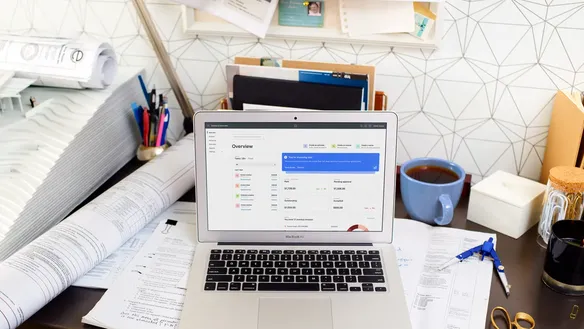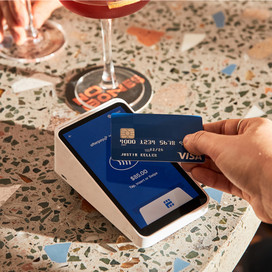Table of contents
Work as a contractor can vary, from one-off jobs to monthly retainers, progress payments to multiple services; there’s a lot you need to consider, but with the right invoicing systems in place, keeping track can be a lot easier for you and your clients.
If you’re not sure how to write an invoice for contract work, the following guide is just what you need to get started.
Step One: Choose Custom Designed Invoices
It doesn’t matter what material you’re sending out; you want to make sure it’s consistent with your brand. Custom designing your invoices will not only improve your company’s image, it will also ensure your invoices stand out – which means you’ll be remembered. Helping improve your payment reliability and brand positioning.
It’s important to remember to keep it simple when custom designing your invoices. You want your clients to be able to find important information easily. Features you might consider with custom designs include:
- Logos
- Paper colour
- A particular font style
- Advertisements
Step Two: What To Include In Your Invoice
Once you have a custom design in mind, it’s time to get all the right information in your invoice. You should always include the following:
- The word INVOICE or TAX INVOICE (depending on the requirements of your clients) on the page, in large font size.
- Your business details, including your business name, address, email, phone number and ABN.
- Your business logo for easy identification.
- Client’s contact details – contact name and position, company name, email and phone are all relevant.
- Invoice number. How you decide this is up to you. Invoicing systems generate automatic numbers, or you could choose your own based on client names or dates.
- Payment terms and method of payment. State the terms of payment clearly (eg, within 7 days), include bank details or other applicable information, and ensure you mention if there are any fees for late payments.
- Invoice date. Be sure to include the date you sent the invoice to the client so they can make a note to pay on time.
- Details of the service or products. This should be itemised and will include the hours worked or the rate per item.
- Total amount due. Although it’s best practice to itemise your work, make sure you include the total amount, including any GST (if registered).
Step Three: Write An Invoice Email
Once you have your invoices set up and ready to send, you’re going to want to know how to write an invoice email. A great idea is to create an invoice email template. This will save you from having to type the same message every time you send an invoice to a client. A template saves both brainpower and time, making life in your busy business much easier. If you send invoices to several clients for similar work, a template will also help to ensure your emails and branding are consistent.
When writing your invoice email, consider the below:
Make it personalised:
You want the email to not only reflect your business, but also the relationship you have with your client. You might want to use their first name in the opening address, include casual connotations (ie “how are you?”) if you have a close working relationship, or keep it simple and professional, without any jargon. It’s up to you!
Keep it straightforward:
Keep the email simple, unless you have been requested to do otherwise. Your email doesn’t need to include highly detailed specifics of the job – your invoice has that information. It just needs to be accurate. Include whether the invoice is an hourly rate or set project, and mention any extra costs, such as shipping.
Ensure the subject stands out:
This is important if you’re emailing a large corporation, you want to make sure your email stands out from others. Some accounts departments receive hundreds of emails a day and it may be easy for yours to go unnoticed. The best idea is to use the number of the invoice, the product or service you provided, and the deadline date. For example Invoice #102 for Roof Installation. Deadline 24 March 2021. Avoid using exclamation marks and full capitals as these can be mistaken for spam.
And don’t forget, before you hit send make sure you’ve attached your invoice!
Step Four: Create An Invoice Email Template
Setting up a template is simple, but if you’re not sure where to start, here is a basic example you could use:
Subject: Invoice [Number] for [Job]. Deadline [Date]
Dear [Client],
I hope you are well.
Please see attached my invoice [number] for [completed project]. Payment is due by [date].
If you would like further information or clarification on any aspects of the invoice, please don’t hesitate to contact me.
Best regards,
[Your name and email signature]
Contractor Invoicing Mistakes To Avoid
Everyone makes mistakes, but when your financial livelihood depends on it, you want the details to be as accurate as possible. The following are common errors that can have a detrimental impact when learning how to invoice as an independent contractor.
Incorrect Details:
Make sure your invoice includes all of the essentials listed above. You might also check with the client to see if they require anything special to be included, such as an order number or further itemisation.
Unclear Terms:
if you want your clients to pay within 7 days, you need to make sure you state this on your invoice, and if there are consequences for late payment, such as a 5% increase per week.
The Wrong Recipient:
When sending an invoice out, make sure you’re sending it to the right department or person. Don’t rely on Google to tell you who manages the accounts. If you aren’t sure where it should go, give the client a call and ask. Otherwise, they may not see the invoice at all.
Poor Spelling Or Formatting:
Make sure your invoices look as professional as possible. There should be no spelling mistakes or grammatical errors, and ensure the layout is easy to read. Using a templated invoicing system can help to avoid this.
If you want to avoid these common invoice mistakes, you need to prepare ahead. If you’d like further information about invoicing clients, check out our tips to manage your invoices and take a look at our advice for how you can get paid fast.
![]()











